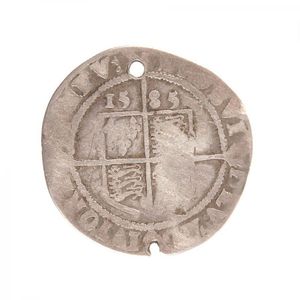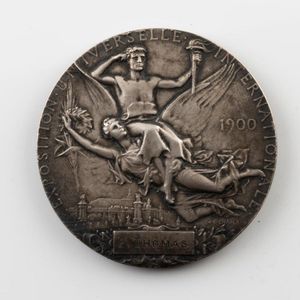Qing Dynasty Tortoise Shell Box with Court Scene
You must be a subscriber, and be logged in to view price and dealer details.
Subscribe Now to view actual auction price for this item
When you subscribe, you have the option of setting the currency in which to display prices to $Au, $US, $NZ or Stg.
- Tortoiseshell - Tortoiseshell is a translucent material that comes from the horny carapace of a certain types of turtles, including the hawksbill turtle. It is often therefore mounted on a colour underground - often red - or inlaid with gold or silver thread, as seen in Boulle furniture.
The texture and colour nuances of the material are extremely important. Heated tortoiseshell can easily be formed into various shapes. Like other natural materials, tortoiseshell becomes more beautiful with use. In a time before plastic, tortoiseshell was widely used for small objects such as combs and powder compacts.
In 1973, the trade of tortoiseshell worldwide was banned under CITES (The Convention on International Trade in Endangered Species). Prior to importing or exporting items containing tortoiseshell a CITES permit must be obtained. Tortoiseshell items cannot be traded on Ebay.
"Faux tortoiseshell", another case of man initiating nature, is made from old-style plastics such as celluloid and cellulos and is coloured with red, yellow and brown spots to imitate the genuine article. It is commonly used in glasses frames, musical instruments and costume jewellery. - Greek Key Pattern - The Greek key pattern is a decorative design that consists of continuous interlocking vertical and right-angled lines that form a repeating motif. It is also known as "Meander" or "Greek fret." The pattern is thought to have originated in ancient Greece, where it was used in various decorative arts, such as pottery, metalwork, and architectural elements. The Greek key design is widely used in a variety of contexts, including classical architecture, decorative arts, furniture, interior design and textiles. The pattern is considered timeless and classic, and its geometric simplicity makes it a popular choice for designers in many different fields.
- Ming Dynasty - The Ming Dynasty was a ruling dynasty of China from 1368 to 1644. It succeeded the Yuan Dynasty and preceded the Qing Dynasty. The Ming Dynasty was established by Zhu Yuanzhang, a former Buddhist monk who became a rebel leader and eventually overthrew the Mongol Yuan Dynasty. During the Ming Dynasty, China experienced a period of relative stability and prosperity. The government was centralized and bureaucratic, with the emperor at the top of the hierarchy. The Ming Dynasty is known for its cultural achievements, including the development of porcelain, the invention of movable type printing, and the construction of the Great Wall of China.
- A/f, as Inspected - The letters "A/F" or "as inspected" as part of a description is the cataloguer's shorthand for "all faults" or "as found", meaning the item has some type of damage or deficiency, it is of uncertain date or provenance, and/or that the seller takes no responsibility for the completeness of the item or the accuracy of the description.
- Qing Dynasty - The Qing Dynasty was the last imperial dynasty of China, ruling from 1644 to 1912. It was established by the Manchu people, who originated from the northeastern region of China. The Qing Dynasty was preceded by the Ming Dynasty and followed by the Republic of China.
Visually similar items

Ancient Roman coin Constantine 1 (AD 307-337), follis, Obv. Laurate and cuirassed bust of Constantine 1, to right, Rev. 2 soldiers each with spear and standard, wt. 2.5g.

An Elizabeth I hammered silver coin, with two suspension holes and in worn condition, order considering age, Date: 1585.

An English 1913 half sovereign, wt. 4g.

Three medals Exposition Universelle Internationale, Paris 1900, medals in bronze by J C. Chaplain, one awarded to G. Geradin, one in original red leatherette case with red bold lettering to the exterior Exposition Universelle/1900, awarded to Saurel Freres
